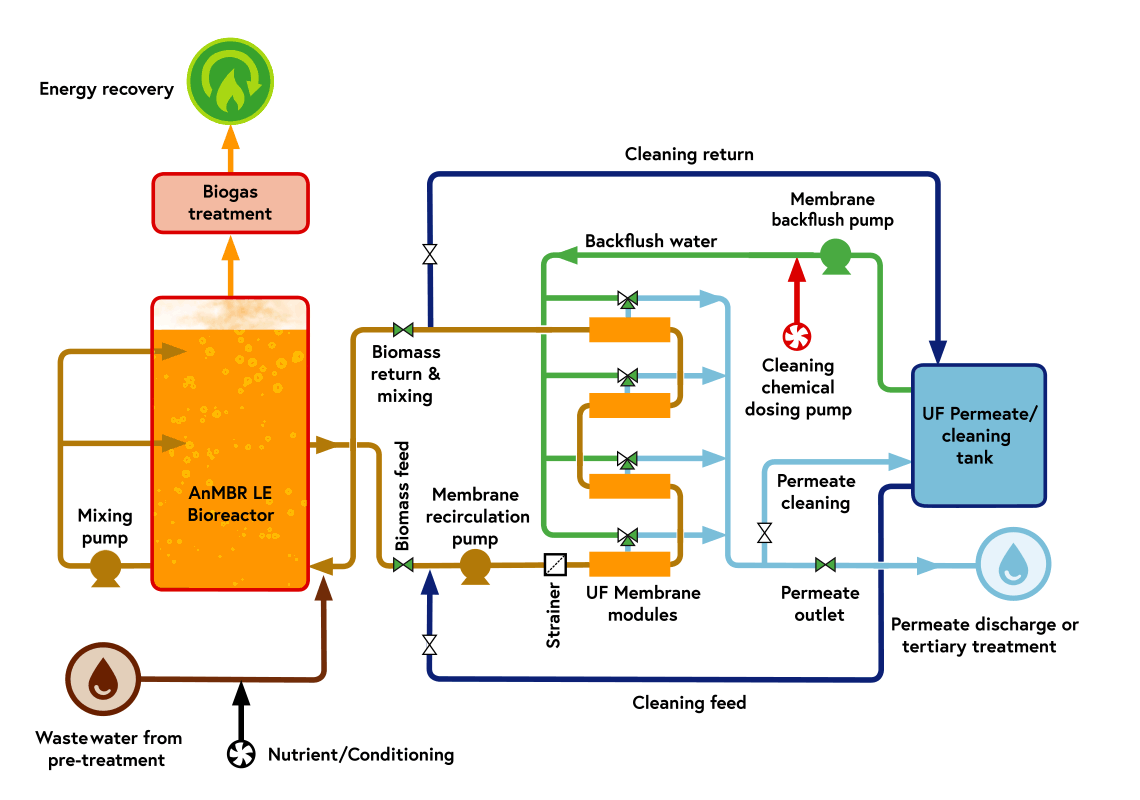

AnMBR LE™
The AnMBR LE™ system combines a low rate completely mixed anaerobic reactor with Aquabio’s proprietary low energy UF membrane separation system. This combination results in a number of advantages in circumstances which favour anaerobic treatment with a focus on very high COD removal rates and biogas recovery.
The membrane separation stage provides complete solids retention thus uncoupling the hydraulic and solids retention times allowing for optimised long sludge ages which maximises COD reduction and provides higher biogas yields. The process is more tolerant to TSS and FOG than granular anaerobic systems and thus provides simplified pre-treatment requirements.
| Applications |
|---|
| Suitable for highly concentrated organic wastewater streams with COD concentrations in excess of 15g/l up to 250g/l |
| Low/medium flow rates, from 90 to 2500m /day |
| When Sludge Bed and granular AD technologies are less suitable e.g. wastewaters with very high COD, high TSS, salinity and/or fats oil and grease |
| Where there are concern about media, or packed bed, technologies |
| Combined with Aquabio’s AMBR/RO/UV water re-use technology for potable/demineralised applications |


| Key Features/Benefits | |
|---|---|
| High quality effluent >98% Total COD removal | Completely enclosed pumped sidestream |
| Greater Tolerance of TSS, salinity and Fats, Oil & Grease | No gas (e.g. methane, nitrogen) scouring is required for the membranes |
| No biomass retention problems | Effective management of scale |
| Uncoupled hydraulic and solids retention times with complete solids retention and controlled sludge age | CIP ‘in loop’ cleaning |
| Low energy biomass separation | Advanced pretested, standardised software and control system |
| No Flocculants/Coagulants required (which can cause process issues and create high OPEX costs) | Lower cost of membrane replacement |
| Simpler pre-treatment | Reduced maintenance, no cranes or working at height required with external to Bioreactor Servicing |
| Robust and consistent performance | Modular design allows for ease of expansion |


